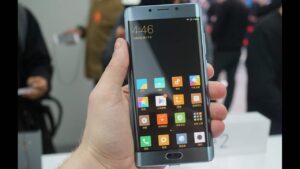A Look at Google’s Mobile First: How to Choose Your Next Smartphone
There is something fundamental in the relationship between the design of a smartphone and the whole concept of User Experience (UX) and this seems to be something many designers fail to realize. In reading reviews of Google’s new Pixel 2 and Pixel 2 XL, you will find that the people behind the Google Giant understand this relationship.
In keeping with their Mobile-First algorithms for a heightened mobile UX, they designed their new smartphones so that the user isn’t suffering from a lack of function due to design trends. When choosing your next smartphone, keep a few key points in mind.
Table of Contents
The Importance of UX
What is most important when choosing a smartphone is how easily you will be able to navigate, no matter which function you are using. Whether you are trying to surf the web, use Maps for directions or simply text your friends, key features must be easy to access. Screens, over the past few years, have gotten increasingly bigger. Unfortunately, they can only get so big before the phone gets too bulky to use comfortably.
So, designers started making screens longer, but even that presented a few problems. Features at the top of the screen, then, became too high up to tap comfortably. Google’s new phones keep those ‘tap’ features close to the bottom of the screen to make it easier to use. Simple, right? But there’s more to UX than basic functionality.
UX While Surfing the Web
When you are surfing the web, Google understood that a mobile user couldn’t experience the web in quite the same way as a desktop user, so they instituted Mobilegeddon a couple of years back. Now every website that is anything has a responsive design to make it easier for you to navigate, search and browse.
Speaking of searching, that is why companies like clickintelligence.co.uk build easy-to-follow links within the content they create. You will find that some content creation companies don’t make it easy for you to follow links naturally so that upon landing on a new site you have no idea why you are there. Often the landing page has nothing to do with what you were hoping to find.
That’s another way of looking at the new Mobile-First algorithms Google is updating and what you can look forward to in the future on your new smartphones. A design should allow you to use the phone the way you want to, without inadvertent taps through to a screen you aren’t trying to access.
A Final Thought on Edge-less Screens
This is also something that Google shied away from in current trends. Yes, those edge-to-edge screens make it easier to give you more viewing area but at what cost? They are not easy to hold without clicking through to someplace you don’t want to go. Apple tried to compensate for that with their Notch, but that is a point of controversy among reviewers. Samsung’s Galaxy S8 made no concessions and now users are finding this phone isn’t as easy to use as could be desired, even though the screen is larger being edge-less.
When choosing your new smartphone, remember that trends may or may not keep the UX in clear focus when designing phones. Do you feel comfortable with the features of that new and trendy smartphone? If not, you are spending a bundle of money on something you will hate using. Keep your comfort in mind when choosing a smartphone and you’ll do well. If this means you don’t choose the trendiest phone on the market, so be it! It’s your phone, so choose one you can use well. That’s the bottom line.




